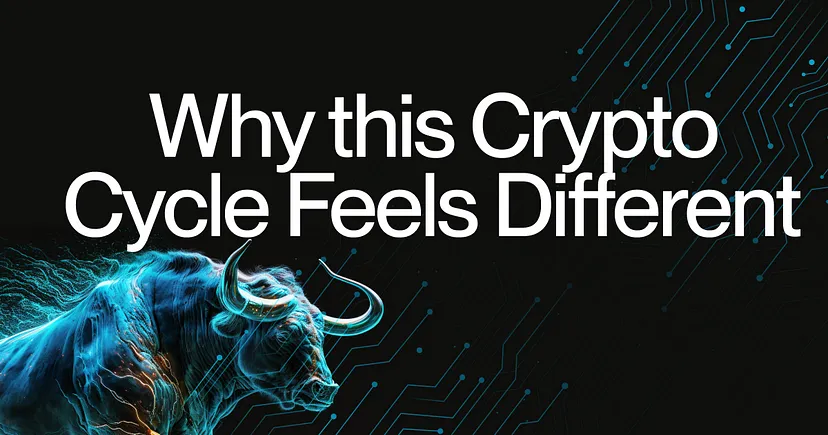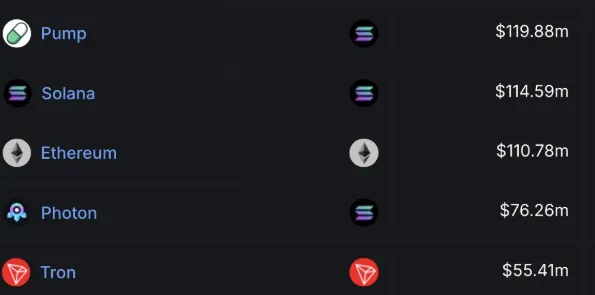Understanding the crypto market cycle: Why is this cycle unique?

Reprinted from panewslab
02/08/2025·4D
Original text: SubQuery Network
Compiled by: Yuliya, PANews
The cryptocurrency market has always been known for its cyclical fluctuations, with common characteristics being extreme peaks and deep pullbacks. Since the birth of Bitcoin in 2009, the market has experienced multiple cycles, and the price trend of each cycle has been affected by different factors. Although some elements remain unchanged, such as the four-year Bitcoin halving cycle, each cycle will also introduce new dynamics to change the way the market operates.
With the arrival of a new round of market cycle from 2024 to 2025, the market generally believes that this time is different from the past. From institutional adoption to changes in the way retail investors participate, various factors make this cycle unique characteristics. The following will explain why this cycle unfolds differently than before and what this means for investors and builders.
Review of traditional cycles of cryptocurrency markets
Cryptocurrency market cycles usually follow the following patterns:
- Correction/Bear Market: The market returns to reality, profit-taking is accelerating, and the liquidity of speculative assets is exhausted.
- Fanatic/Summit: The market is overheated, speculative sentiment dominates, and altcoins show extreme gains.
- Expansion/bull market: Optimism returns, prices rise, media reports attract new retail investors to enter.
- Accumulation stage: After a bear market, smart funds and long-term holders accumulate assets at low prices.
This model has been repeatedly staged in multiple cycles, from the prosperity and collapse in 2013, to the ICO frenzy in 2017, to the bull market driven by DeFi, NFT and institutional interests in 2021. However, the market cycle in 2024 shows a different pattern, and some unique forces are reshaping the market environment.
Institutions adopt to promote Bitcoin strength
The biggest difference in this cycle lies in the role of institutional capital. Unlike the previous bull market driven mainly by retail speculation, this cycle has witnessed large-scale institutional adoption:
- Derivatives Market Growth : The expansion of Bitcoin futures and options trading has made the market more structured and liquid, and the volatility has decreased compared to previous cycles.
- Business and sovereign state interests : Large companies and even some countries include Bitcoin on their balance sheets or use them as hedge tools.
- Bitcoin Spot ETF : The U.S. approved Bitcoin Spot ETF, opening a channel for institutional investors to allow trillions of dollars of capital to enter the Bitcoin market in a regulated manner.
Therefore, Bitcoin has become the most outstanding crypto asset, firmly sitting on the throne of the "king of cryptocurrencies", reaching a new high and dominating market liquidity. It is difficult for altcoins to obtain the same explosive growth space as before in this cycle.
Market dilution: Altcoins surge, earnings space shrinks
In previous cycles, the supply of newly launched altcoins has been relatively small, creating opportunities for explosive growth. However, this time, the number of crypto projects has increased significantly.
According to Dune Analytics, as of the end of January 2025, there were more than 36.4 million tokens in circulation on the market, compared with only about 3,000 from 2017 to 2018. Reasons for this change include:
- Token unlocking: Many projects continue to release locked tokens, increasing market selling pressure, resulting in a sharp pullback in most token prices.
- Meme coins market overcrowding: Unlike the few Meme coins (such as Dogecoin and Shiba Inu) that have attracted most of the attention in the past cycle, a large number of new Meme coins will be launched every day in 2024, making it difficult for a single token to continuously gain market momentum.
- Layer 1 and Layer 2 surge: The rise of hundreds of Layer 1 and Layer 2 expansion solutions has diversified market liquidity.
This market dilution means that although some altcoins still perform well, widespread markets like almost all tokens have risen sharply in the past cycle are unlikely to reappear.
Retail liquidity is guided to new areas
Retail traders have always been an important driving force for the cryptocurrency bull market, but the main difference in this cycle is that retail liquidity is attracted to new mechanisms outside of traditional spot trading.
The Rise of Pump.fun

Pump.fun was launched on January 19, 2024, completely changing the behavioral patterns of retail investors in cryptocurrency around the world. The platform allows anyone to create Solana tokens for free in one minute, spawning some of the largest Memes in 2024, attracting retail investors to flow to high-risk, high-return speculative small-cap tokens, away from major altcoins.
This dynamic has had several significant impacts:
- Provide more exit liquidity for insiders: Insiders launch new tokens that quickly attract retail funds, but the constant rotation has caused many retail investors to suffer losses before transferring their profits to major altcoins.
- Fund rotation accelerates: The flow cycle of retail funds between new tokens is shortened to several hours or days, making it difficult for mature altcoins to form a sustained upward trend.

As of January 2025, Pump.fun has generated revenue of $116.72 million, surpassing revenues of Solana ($116.46 million) and Ethereum ($107.64 million).
What does this mean for crypto investors?
Although this cycle is still developing, several key conclusions have been clarified:
- Retail speculative funds are being directed to emerging platforms such as Pump.fun and innovative on-chain trading mechanisms. Understanding these changes helps traders judge liquidity trends.
- The altcoin market will be more selective. Unlike nearly all tokens that have risen in the past, projects with practical application scenarios, strong token economic models and real needs will become the main winners in this cycle.
- Due to institutional adoption, Bitcoin remains the dominant force, and many investors focus on Bitcoin rather than speculative altcoins.
in conclusion
Although the cryptocurrency market still follows a familiar cyclical model, the market cycle in 2024 is different from before. The rise of institutional adoption, market dilution, retail liquidity transfer and changes in the macro environment have jointly created a new market pattern.
For investors and builders, adapting to these changes is key to successfully responding to this cycle. Market rules have changed, but opportunities still exist for those who have insight into the flow of funds.


 jinse
jinse
 chaincatcher
chaincatcher